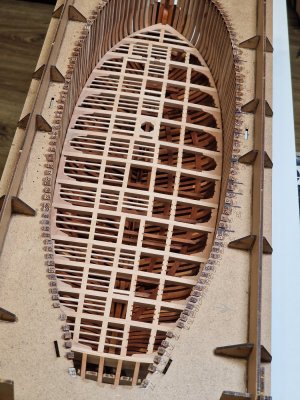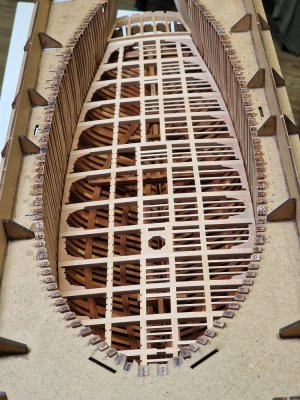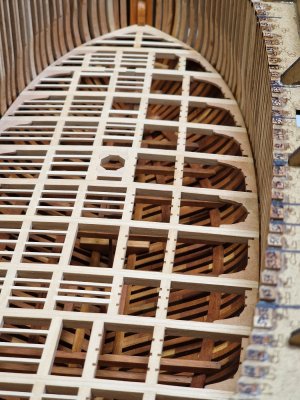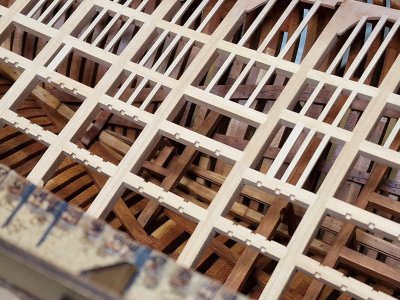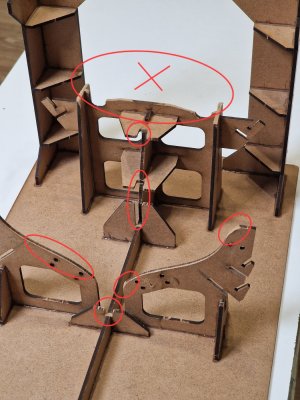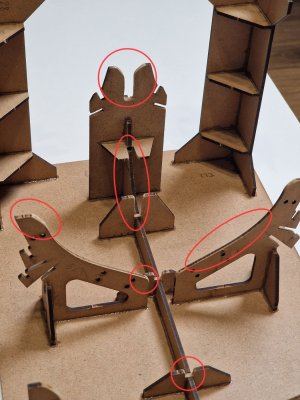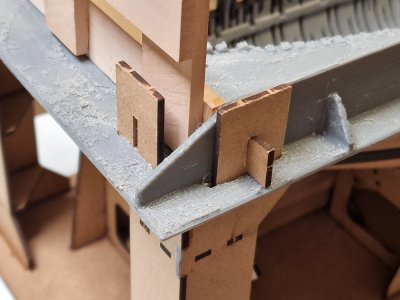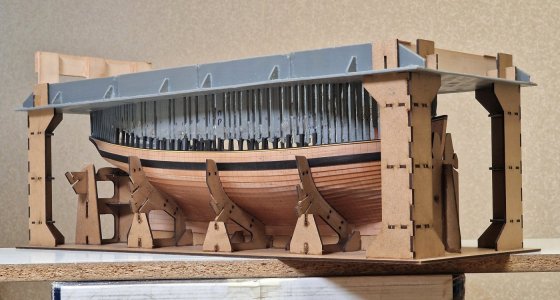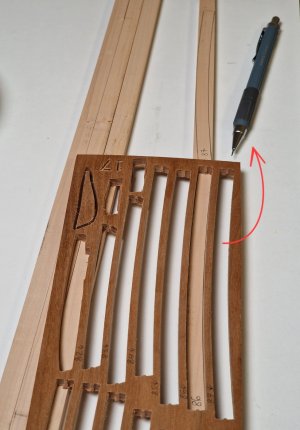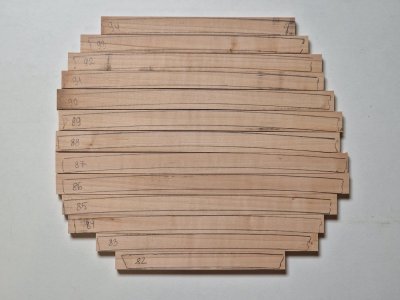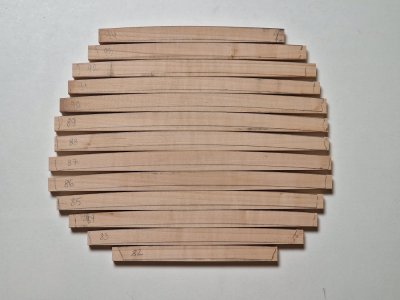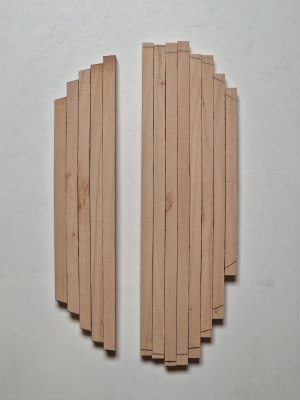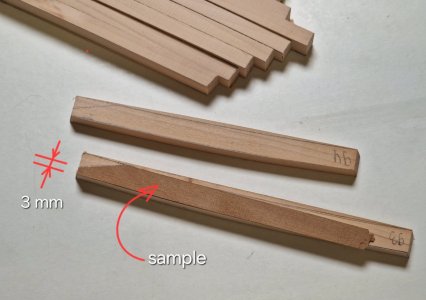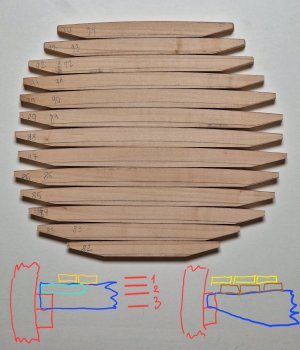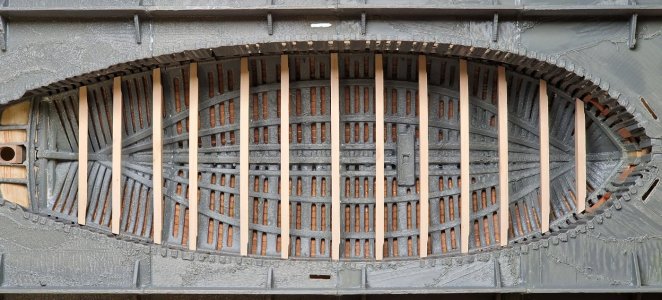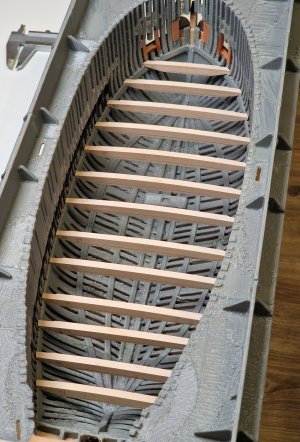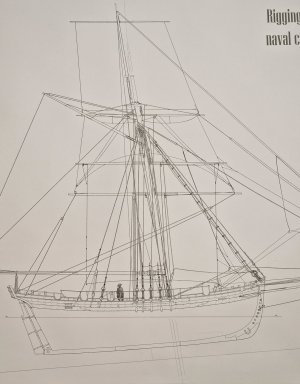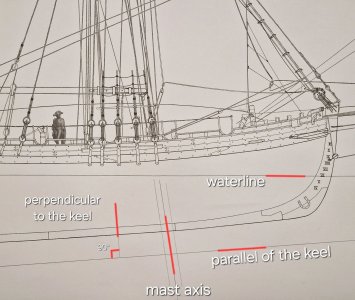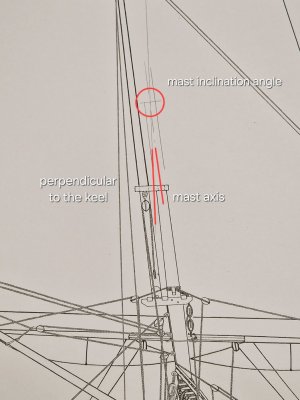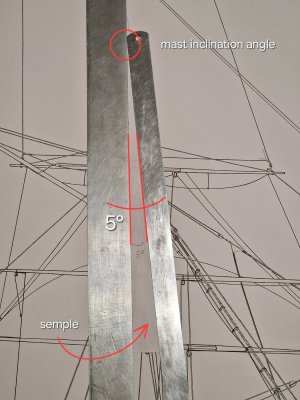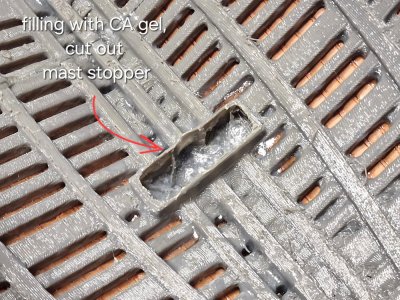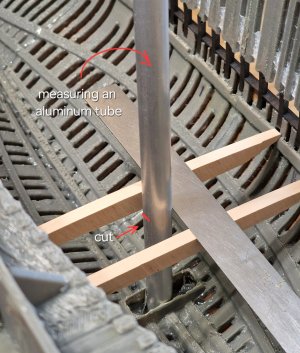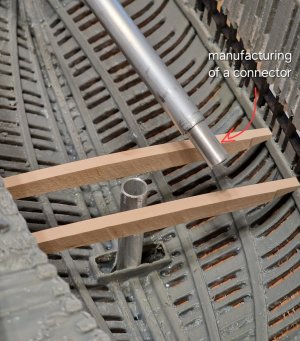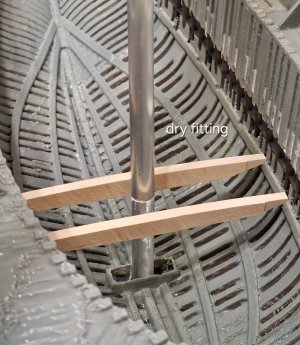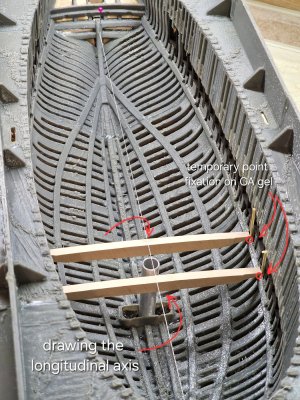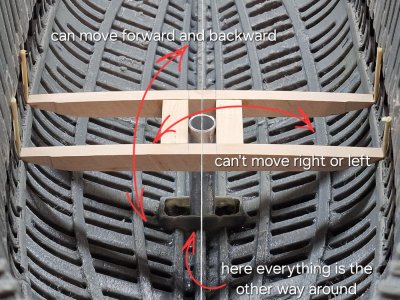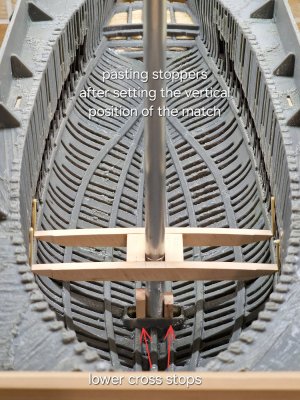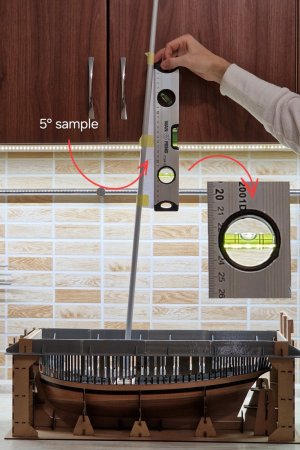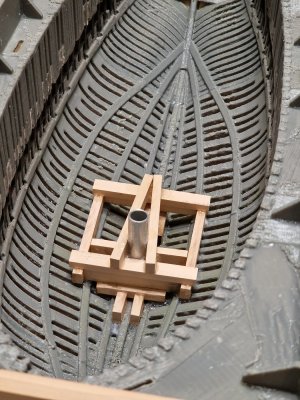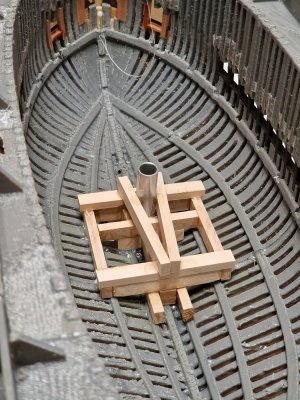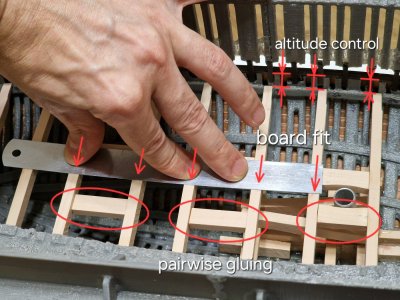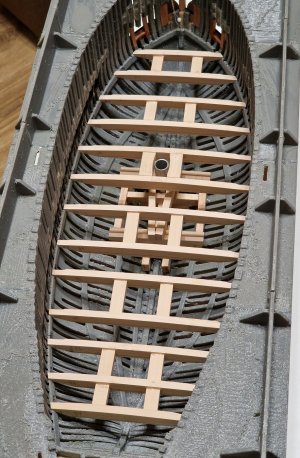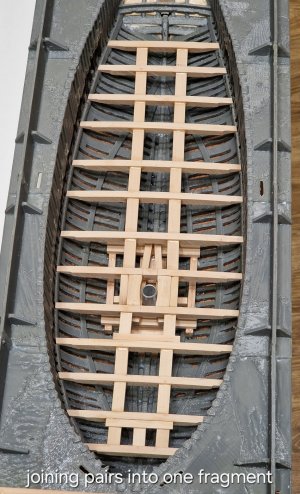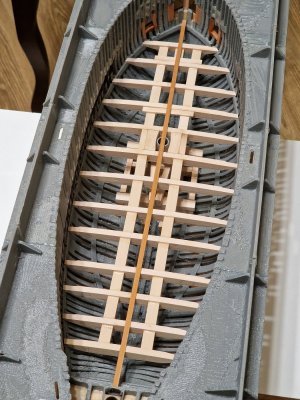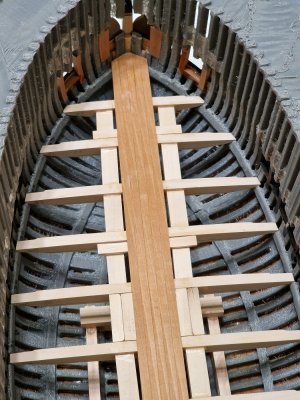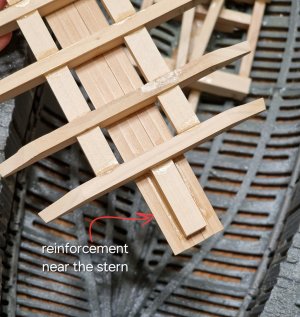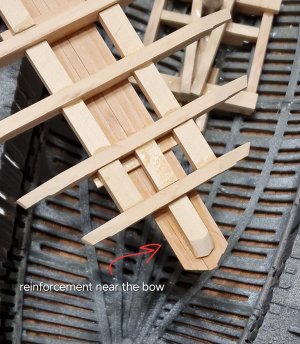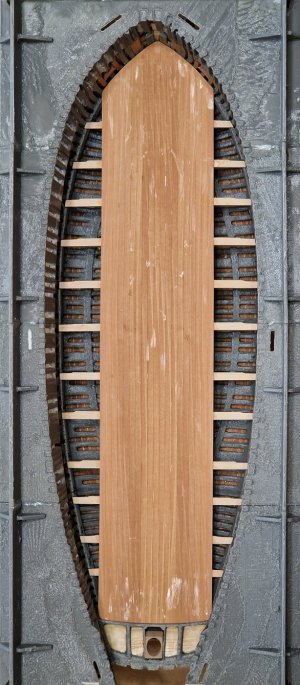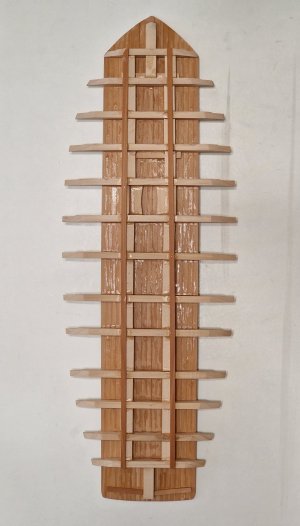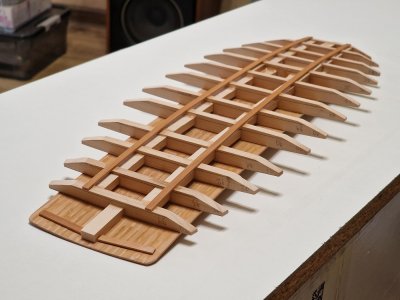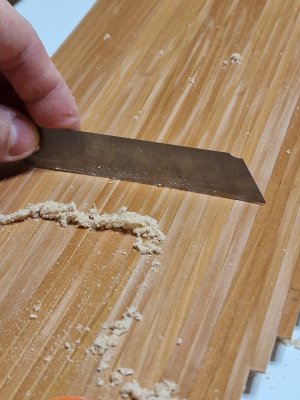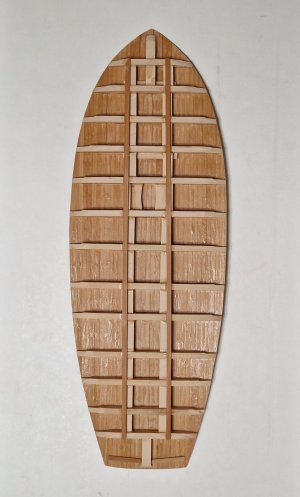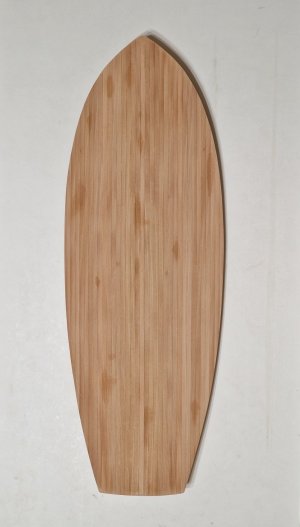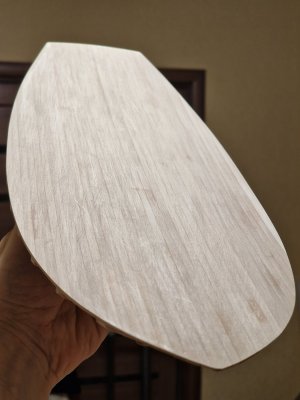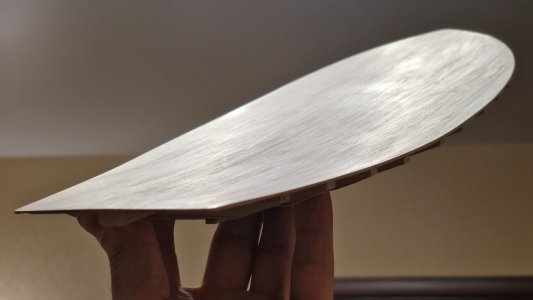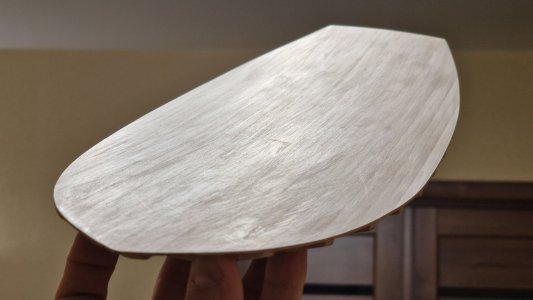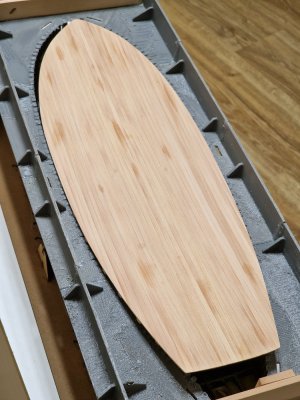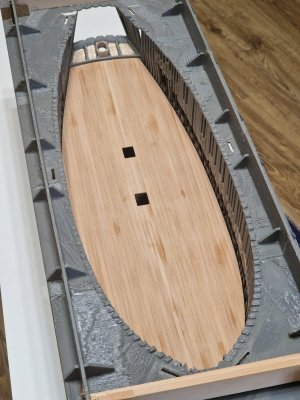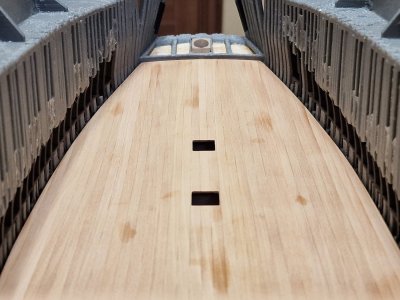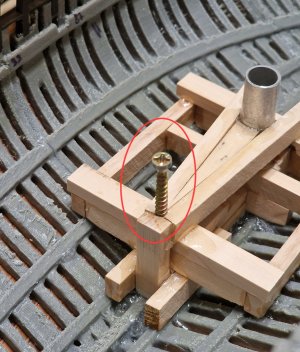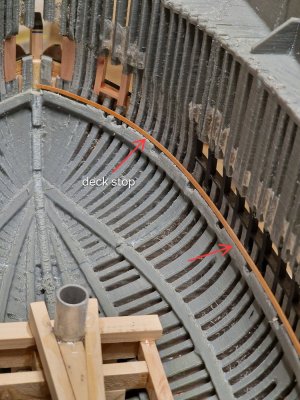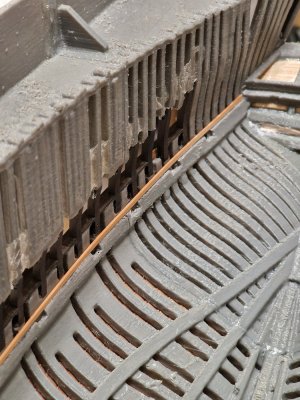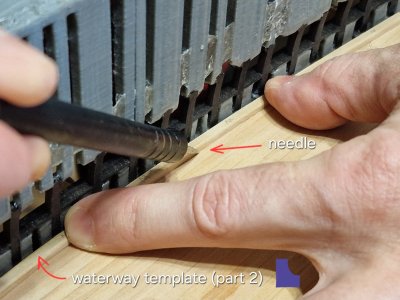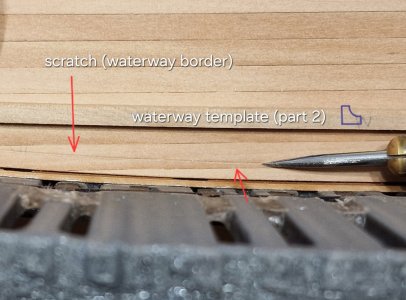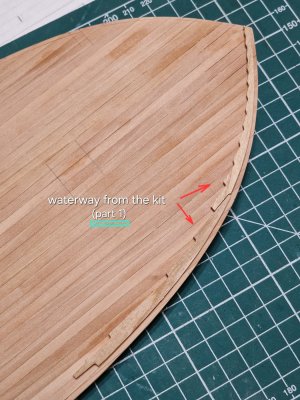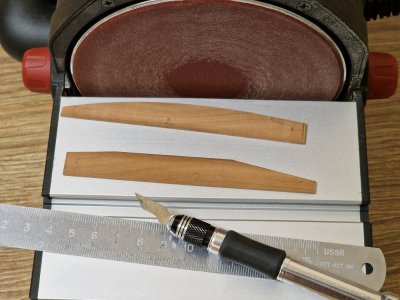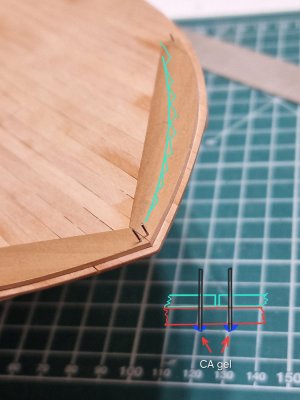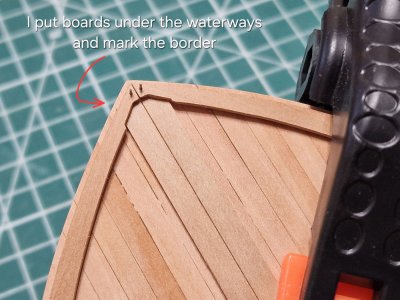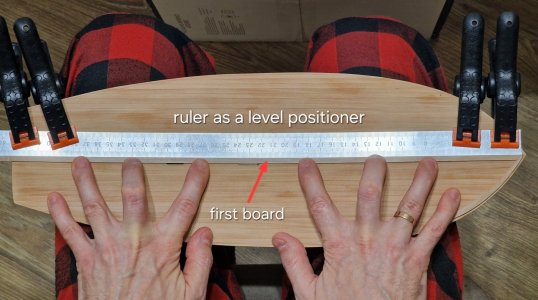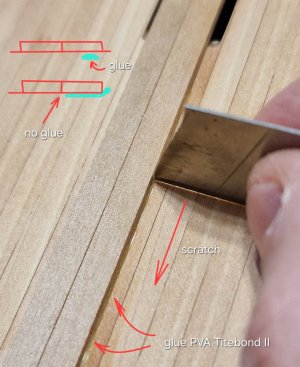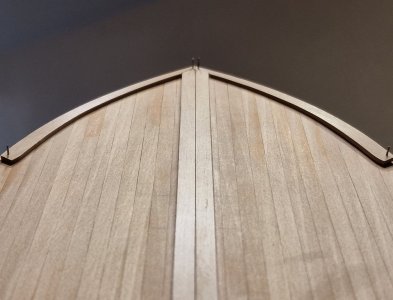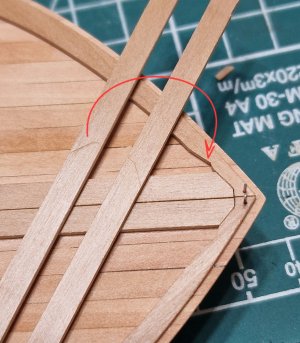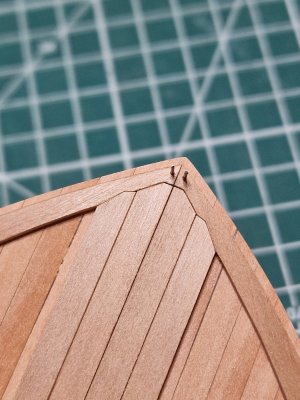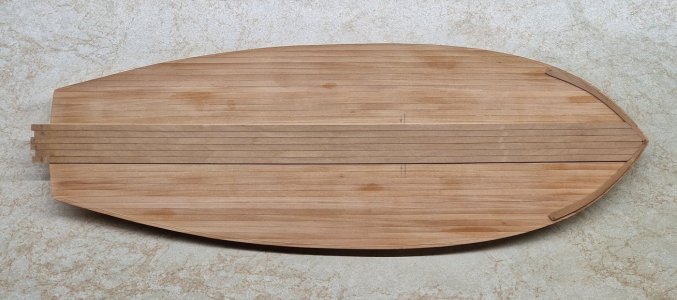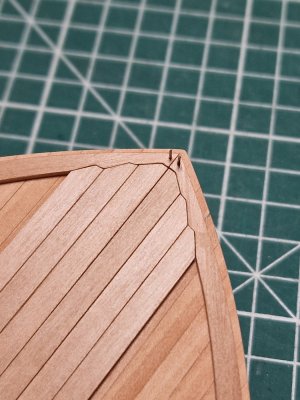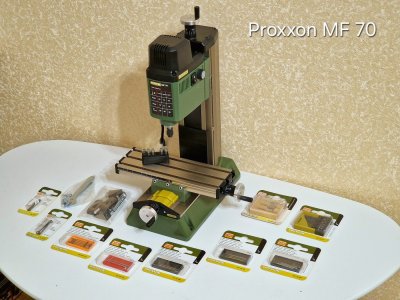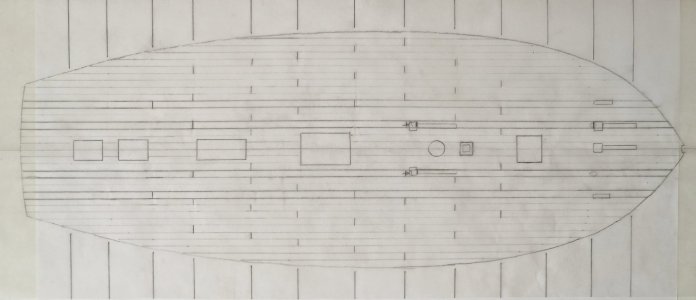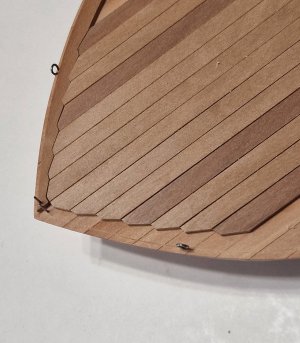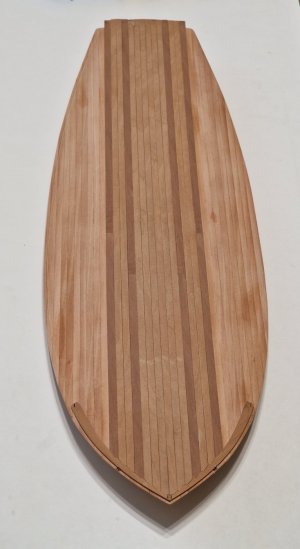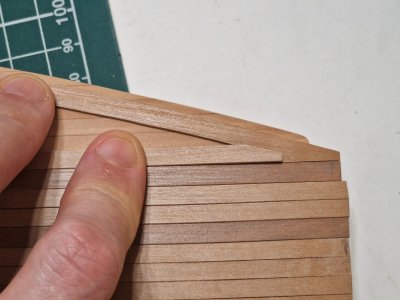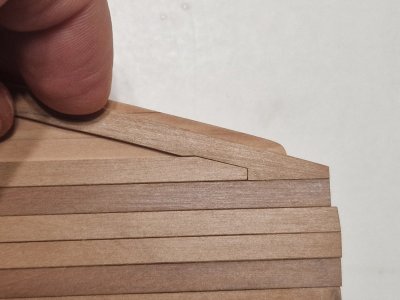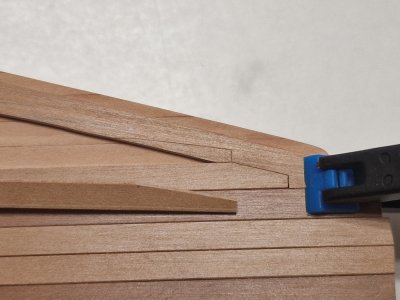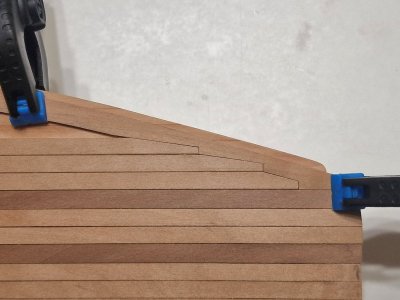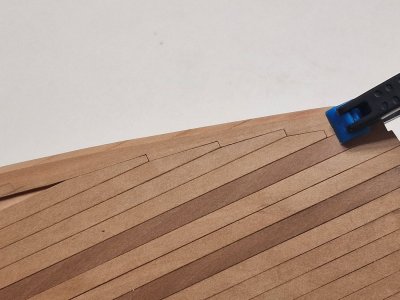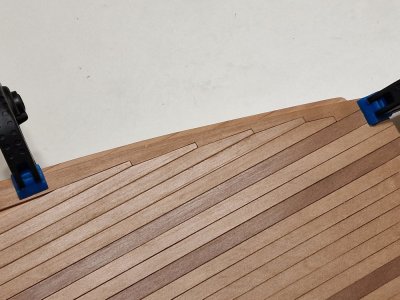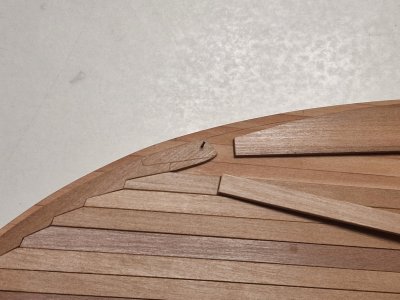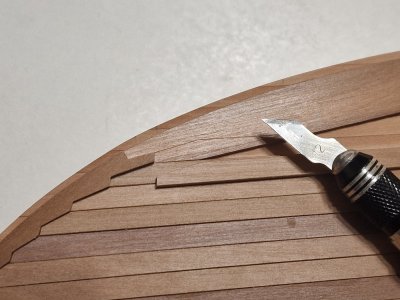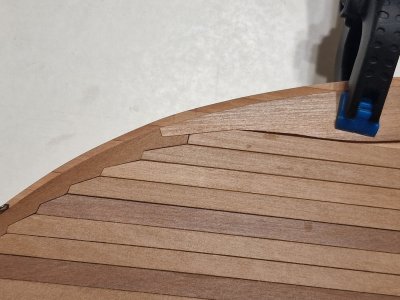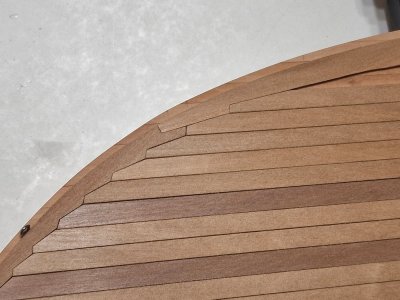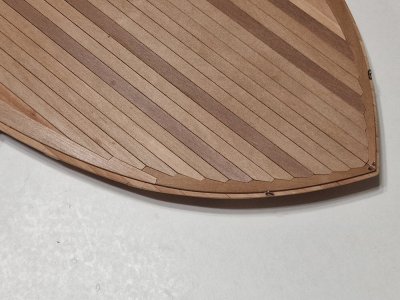Today I was able to complete 6 spans at once...
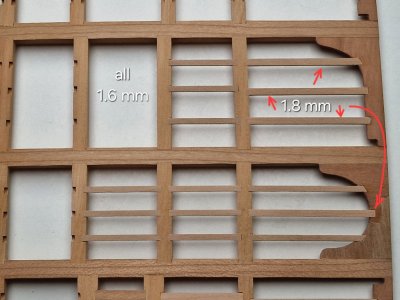
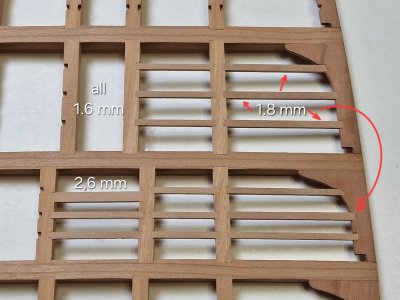
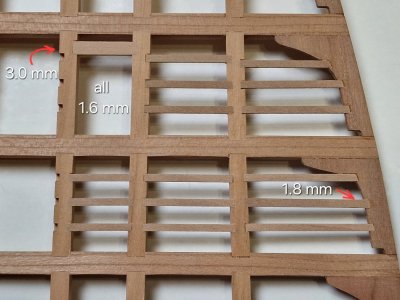
...the logic remains basically the same: basically, all the lintels are 1.6 mm. In areas under the guns and where the spans are longer, they're 1.8 mm. Where the grates are, they're 3 mm, and near the pumps, they're 2.6 mm.
Here, as promised, is a diagram of my proposed layout for lintels of varying widths.
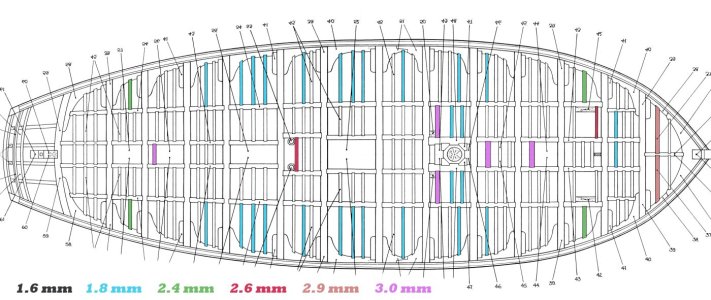
I was guided by anatomy and (naval) logic, but that doesn't mean I can't make mistakes. So, the decision is yours; here I'm simply showing you how I did it.
So, here's the almost finished deck. It's still missing the last two spans, but it already looks interesting!
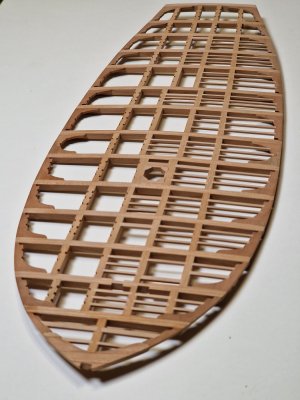
P.S. Once again, I'm convinced I did the right thing by only making half the crossbars. The lower deck is clearly visible through the empty spaces, and another very positive aspect is that the work is going almost twice as fast, which is a definite plus.
P.P.S. @Kurt Konrath , I remember when I saw this kit and how I eagerly devoured all the information about this ship from this forum. There are over 25 reviews here, but unfortunately, most of them are still unfinished, which is sad. I hope my review will be helpful to other modelers who want to build this wonderful model.



...the logic remains basically the same: basically, all the lintels are 1.6 mm. In areas under the guns and where the spans are longer, they're 1.8 mm. Where the grates are, they're 3 mm, and near the pumps, they're 2.6 mm.
Here, as promised, is a diagram of my proposed layout for lintels of varying widths.

I was guided by anatomy and (naval) logic, but that doesn't mean I can't make mistakes. So, the decision is yours; here I'm simply showing you how I did it.
So, here's the almost finished deck. It's still missing the last two spans, but it already looks interesting!

P.S. Once again, I'm convinced I did the right thing by only making half the crossbars. The lower deck is clearly visible through the empty spaces, and another very positive aspect is that the work is going almost twice as fast, which is a definite plus.
P.P.S. @Kurt Konrath , I remember when I saw this kit and how I eagerly devoured all the information about this ship from this forum. There are over 25 reviews here, but unfortunately, most of them are still unfinished, which is sad. I hope my review will be helpful to other modelers who want to build this wonderful model.











